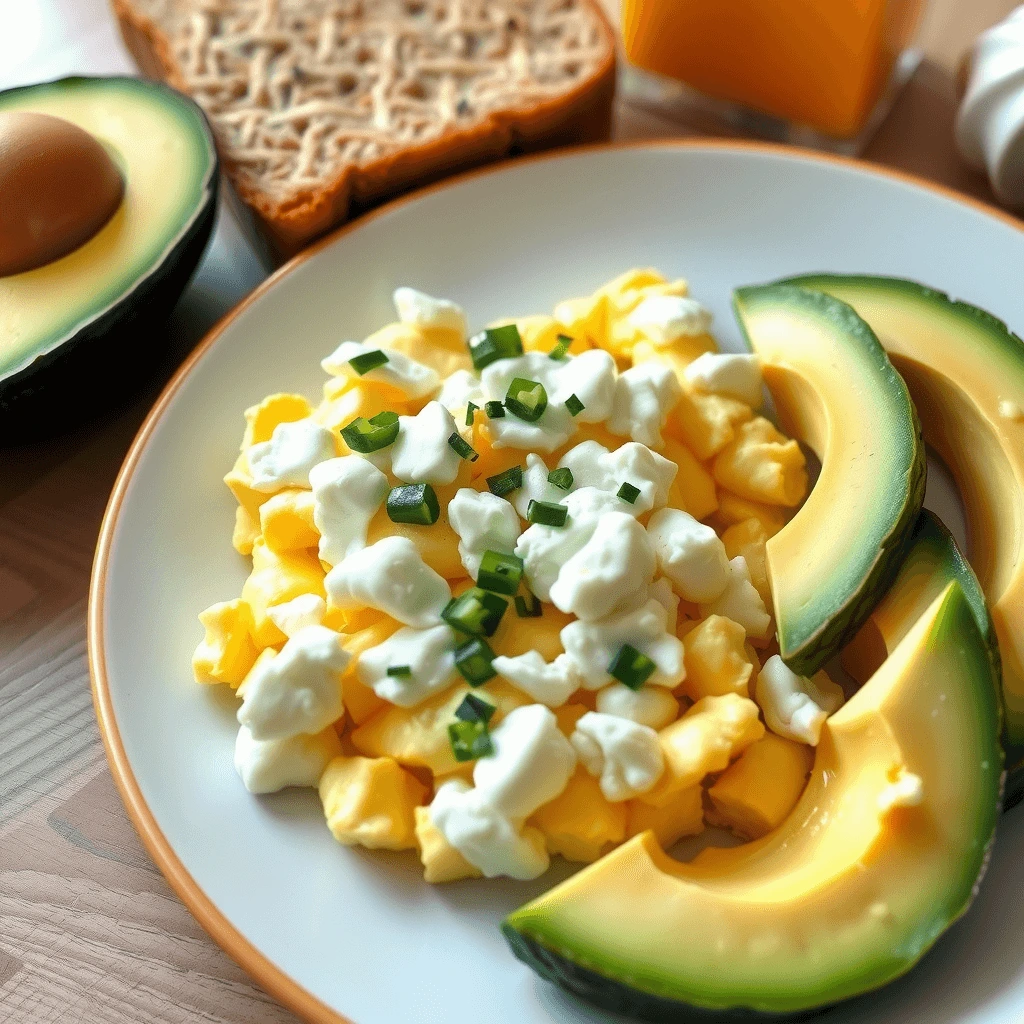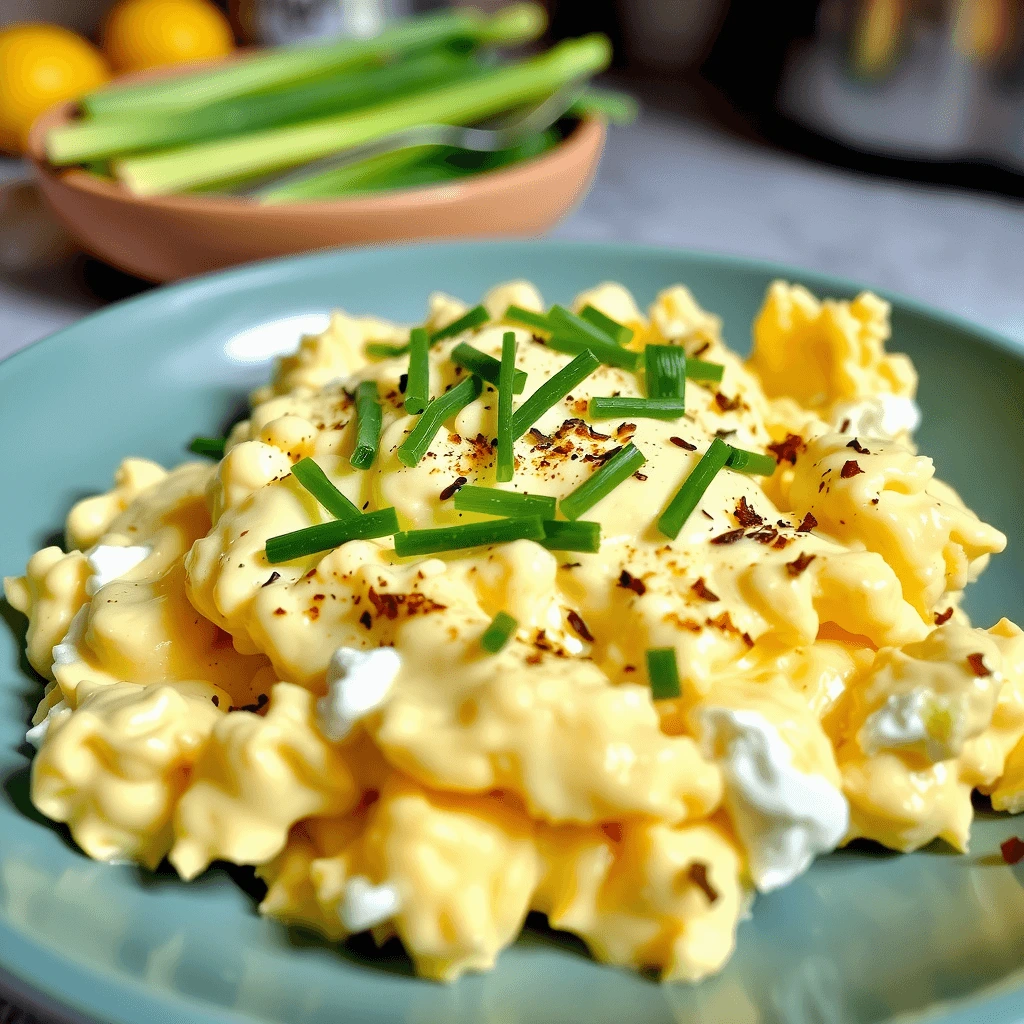There’s something magical about starting your day with a warm, comforting plate of scrambled eggs. But if you’re like many, you’ve probably faced the disappointment of dry, rubbery eggs that lack that luscious, creamy texture you crave. What if I told you that the secret to transforming your scrambled eggs lies in a humble, protein-packed ingredient sitting quietly in your fridge, cottage cheese?
By adding cottage cheese to your scrambled eggs, you can effortlessly create a silky, rich dish that feels indulgent but is surprisingly simple and nutritious. This guide will walk you through everything you need to know about making cottage cheese scrambled eggs that are extra creamy and full of flavor. Whether you’re a novice cook or a seasoned breakfast enthusiast, you’ll learn how to elevate your morning routine with this easy, satisfying recipe.
Why Add Cottage Cheese to Your Scrambled Eggs?
You might wonder, why cottage cheese? Isn’t it just another dairy product? Actually, it’s a game-changer when it comes to texture and nutrition.
Creaminess Meets Nutrition
Cottage cheese is packed with high-quality protein, calcium, and probiotics, all while adding moisture that keeps your scrambled eggs tender and luscious. Unlike milk or cream, which can sometimes make eggs watery or overly rich, cottage cheese blends in smoothly, creating a delicate creaminess that feels like a chef’s secret.
Better Texture Without the Guilt
If you’re watching calories or aiming for a more balanced diet, cottage cheese is a fantastic choice. It’s lower in fat than heavy cream but still provides that luxurious mouthfeel. Plus, the curds soften during cooking, helping your eggs stay fluffy without drying out.
Expert Insight
Food scientists and chefs alike recommend dairy proteins for improving egg texture because they stabilize the proteins during cooking. This means you’ll avoid rubbery eggs and get a consistently soft, creamy bite every time.
What You’ll Need: Ingredients for cottage cheese scrambled eggs

Before diving into the cooking, let’s gather the essentials. Using fresh, quality ingredients is crucial to nailing the perfect texture and taste.
| Ingredient | Quantity | Notes |
| Large eggs | 3 | Free-range or organic preferred |
| Cottage cheese | 1/4 cup | Full-fat for richness, or low-fat for lighter texture |
| Butter | 1 tablespoon | Unsalted, for controlled seasoning |
| Salt | To taste | Sea salt enhances flavor gently |
| Black pepper | To taste | Freshly ground for best aroma |
| Optional herbs | 1 tablespoon | Chives, parsley, or dill for freshness |
You can also customize your eggs with add-ons like sautéed mushrooms, spinach, or cheese varieties, which we’ll explore later.
Step-by-Step Guide: Making Your Scrambled Eggs Extra Creamy with Cottage Cheese
The technique is as important as the ingredients. Follow these steps to ensure your eggs turn out perfectly creamy every time.
1. Whisk Your Eggs Lightly
Start by cracking your eggs into a bowl. Whisk them gently to combine yolks and whites, no need to overbeat. The goal is to create a smooth, even base without incorporating too much air.
2. Fold in the Cottage Cheese
Add the cottage cheese directly into the eggs. Stir gently to combine, allowing the curds to distribute throughout the mixture. If you prefer a smoother texture, you can briefly blend the cottage cheese with the eggs using a fork or whisk.
3. Melt the Butter on Low Heat
Place a non-stick skillet on the stove and melt your butter over low heat. Butter not only prevents sticking but adds a subtle richness that pairs beautifully with cottage cheese.
4. Cook Slowly, Stir Gently
Pour the egg mixture into the pan. Using a silicone spatula, stir slowly and continuously, scraping the bottom to prevent sticking and encourage gentle curds. Keep your heat low to avoid overcooking or drying out.
5. Remove Before Fully Set
The eggs will look slightly undercooked and creamy as you near the end. Remove the pan from heat just before they reach your preferred doneness, the residual heat will finish cooking them. This trick keeps the eggs silky and soft.
Flavor Boosters: Variations to Make Your cottage cheese scrambled eggs Even Better
If you want to take your scrambled eggs beyond the basics, there are plenty of ways to add flavor and variety without sacrificing creaminess.
Fresh Herbs and Spices
- Chopped chives or parsley add a bright freshness.
- A pinch of garlic powder or smoked paprika can introduce a subtle kick.
- Dill works wonderfully if you’re serving with smoked salmon or avocado.
Veggie Mix-Ins
- Lightly sautéed spinach or mushrooms give texture and nutrition.
- Cherry tomatoes bring bursts of sweetness and color.
Cheese and Protein Enhancements
- Stir in some shredded cheddar or crumbled feta for extra richness.
- Add diced ham or smoked salmon for a protein-packed boost.
Serving Suggestions
- Serve your eggs over toasted sourdough or whole-grain bread.
- Pair with sliced avocado or a side of fresh fruit for a balanced meal.
Nutritional Breakdown: Why Cottage Cheese Scrambled Eggs Are a Smart Choice
Besides the delightful texture, this recipe packs a nutritional punch that supports your health goals.
| Nutrient | Scrambled Eggs (3 eggs) | With Cottage Cheese (1/4 cup) |
| Calories | ~210 | ~240 |
| Protein (grams) | 18 | 25 |
| Fat (grams) | 15 | 17 |
| Calcium (mg) | 60 | 120 |
Protein-Packed
The added cottage cheese boosts protein content significantly, helping you stay fuller longer and aiding muscle repair if you’re active.
Bone Health
With double the calcium, your morning meal supports strong bones and teeth.
Balanced Fat Content
Choosing full-fat or low-fat cottage cheese allows you to control richness and calories according to your preference.
Common Pitfalls and How to Fix Them

Even the best cooks encounter hiccups. Here are quick fixes to common issues you might face:
Watery Eggs?
- Make sure to drain excess liquid from your cottage cheese before adding.
- Cook over low heat to prevent curdling caused by too much moisture.
Rubbery or Overcooked Eggs?
- Slow your cooking temperature down. Patience is key.
- Remove from heat before eggs are fully firm, letting carryover heat finish the job.
Chunky Texture You Don’t Like?
- For a smoother consistency, blend the cottage cheese briefly with your eggs before cooking.
- Use small-curd cottage cheese to reduce chunks.
Frequently Asked Questions (FAQs) About Cottage Cheese Scrambled Eggs
Q1: Can I use low-fat or fat-free cottage cheese?
Absolutely. Low-fat options work fine but may yield a less creamy texture. Adjust cooking time and heat accordingly to avoid dryness.
Q2: Does cottage cheese change cooking time?
Yes, slightly. The added moisture means you should cook eggs gently and a little slower to maintain creaminess.
Q3: Can I prepare this recipe in advance?
It’s best enjoyed fresh for maximum creaminess, but leftovers can be refrigerated and reheated gently, preferably in a skillet over low heat.
Q4: Is this recipe keto or low-carb friendly?
Definitely. Eggs and cottage cheese fit well within keto or low-carb diets, offering high protein with minimal carbs.
Conclusion: Elevate Your Breakfast with Creamy cottage cheese scrambled eggs
If you’re ready to transform your breakfast into something truly comforting and nourishing, cottage cheese scrambled eggs are a simple, delicious solution. You get the perfect balance of creaminess and fluffiness without the guilt or fuss. By following the tips here, you’ll enjoy a richer texture, enhanced flavor, and a protein-packed start to your day.
So why settle for ordinary scrambled eggs when you can make them extraordinary? Grab your eggs and cottage cheese tomorrow morning and experience this small but powerful upgrade. And once you try it, don’t forget to share your favorite variations and tips, you might inspire someone else to love breakfast even more!
Ready to make the creamiest scrambled eggs of your life? Give this recipe a try and let me know how yours turn out!
LEAVE A COMMENT
There are no reviews yet. Be the first one to write one.

